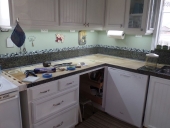Interior finishing for a tin building opens up a realm of creative possibilities, transforming an industrial space into a charming, functional, and inviting environment. The unique canvas provided by the tin structure allows for innovative design concepts that blend rustic aesthetics with modern comforts.
Start by considering the color palette. Soft neutrals like whites, grays, and earthy tones can balance the rawness of the tin walls while creating a versatile backdrop for various décor styles. Incorporating wooden elements, such as exposed beams or reclaimed wood accents, can add warmth and a touch of nature to the space.
Lighting plays a crucial role in enhancing the atmosphere. Industrial-style pendant lights or vintage chandeliers can serve as focal points, complementing the tin's rugged appeal. To create visual interest, you could experiment with different lighting fixtures at varying heights.
Textiles and furnishings contribute to both comfort and style. Soft, plush textiles like area rugs, cozy sofas, and upholstered chairs can soften the space and juxtapose its industrial nature. Mixing vintage and contemporary furniture pieces can create an eclectic vibe that showcases your personality.
Consider incorporating functional partitions or room dividers to define different areas while maintaining an open feel. Sliding barn doors or repurposed panels can add character and privacy where needed.
Art and accessories provide the finishing touches. Large-scale artwork or murals can make a bold statement against the tin backdrop. Decorative elements like indoor plants, vintage signs, or quirky wall hangings can infuse the space with personality.


